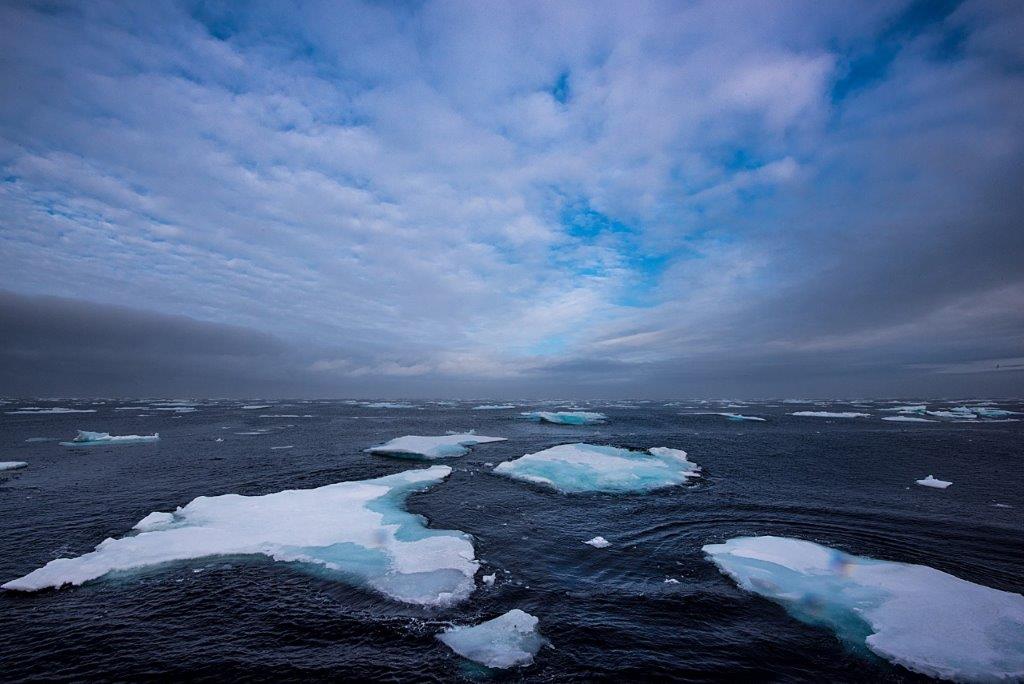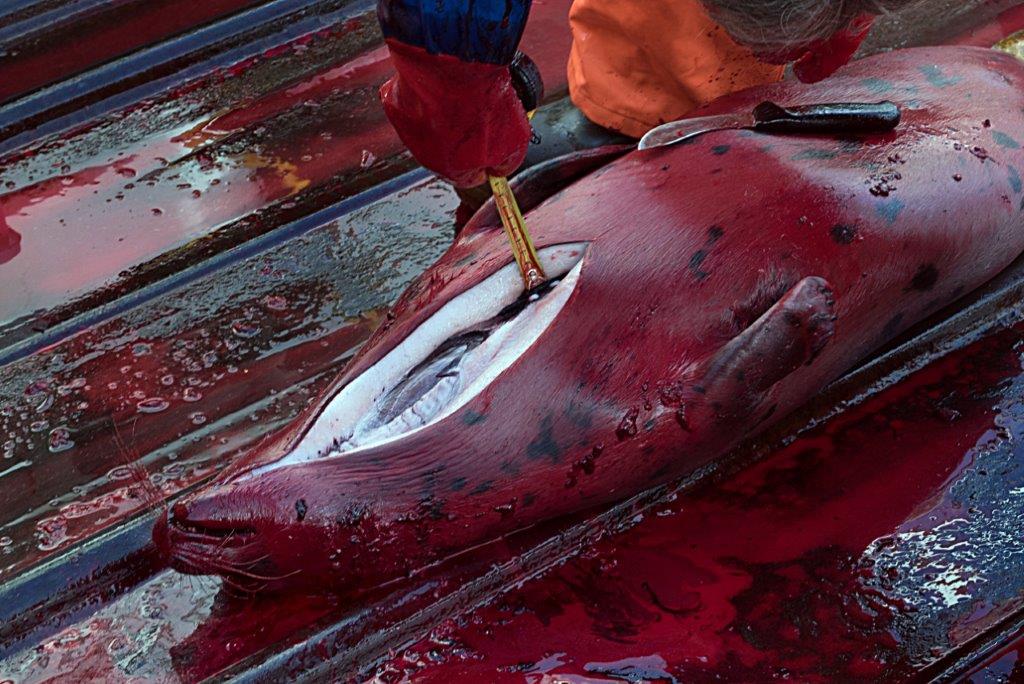
The aft deck of the research vessel “Helmer Hanssen” at sundown
Photo: Elvar H. Hallfredsson
Interesting finds ready for analysis
Cruise diary: On 16 September we set foot on land for the first time in two weeks. This marked the end of this year’s SI_ARCTIC survey. Nineteen scientists had surveyed the ecosystem “from physics to whale” in the area west and north of Svalbard. This cruise was the third in as many years, and the data will be used to analyse relationships in the ecosystem.
With contributions from Harald Gjøsæter, Tore Haug, Tor Knutsen and Aino Hosia
The objective of the annual SI_ARCTIC survey is to survey and study the areas where the ice has retreated. This year’s cruise concentrated on the ice edge on the Yermak Plateau and the deeper waters further to the east. The ice edge moves in accordance with the wind and, unfortunately, it came quite a long way south in the weeks prior to the cruise. As a consequence of this, we did not get as far north and into the deeper waters as planned. However, we still managed to collect good data from the ice edge.

During this year’s SI_Arctic Survey, the water surface was colder than the previous two years, while water at depths of 50 metres or more was warmer than the previous years.
Photo: Elvar H. Hallfredsson
Temperature increase in the depths
In order to achieve good coverage of the area that has been ice-free, slightly different coverage areas were selected for the cruises in 2014, 2015 and 2016. We compensate for this by having some regular stations and sections each year (see map). Two of these stations are located in the North Atlantic Current, which is the main source of heat for the deeper waters in this area. This year’s SI_ARCTIC survey started about two weeks later than the previous two years, and the temperature measurements from these two stations show that autumn cooling had started. Consequently, lower temperatures were recorded on the ocean surface in 2016 than in 2014 and 2015, while the opposite was the case in the deeper layers of water. West of Svalbard, the temperatures in the North Atlantic Current were almost 0.5 ˚C higher than in 2014 and 2015, and the differences north of Svalbard were even greater. In this area, all the water at a depth of around 50 metres or more was between 1 and 1.5 ˚C warmer than the previous years.
Less polar cod than expected
Differences also exist in the amount of fish we measured and caught. The preliminary results from this year’s survey indicate there are more fish and plankton in the area than in 2015, but less than in 2014. However, it is important to remember that most of the cruise has been in slightly different places each year. Consequently, it is important to interpret these preliminary observations with caution. As in previous years, we found quite a lot of large cod north of Svalbard. Moreover, we found more Greenland halibut and polar cod than in the two previous years. Polar cod is interesting for two reasons; it is an Arctic species and we find far less of it in these areas than we initially expected. We do not yet know the reason for this, but it may be linked to the strong influence of warm Atlantic Ocean water there.
More seals, but fewer whales
Among marine mammals, we observed six blue whales, seven fin whales, four common minke whales, eight orcas and 490 harp seals. In addition, we observed a number of other seal species and springers. The large number of harp seals may be attributed to the fact that we were searching for this species during this year’s survey. With respect to whales, we observed somewhat fewer than during the previous SI_ARCTIC surveys. This can probably be attributed to the fact that priority was given this year to travelling along the ice edge, while whales are generally in open water. It is also worth mentioning that while a relatively large number of humpback whales were observed in both 2014 and 2015, not a single whale of this species was observed this year.
While most of seals were observed along the ice edge in the western part of the expedition area (on the Yermak Plateau), most of the whales were observed in the Hinlopen area. A number of whales were also observed in this area in 2014 and 2015, which may indicate that special conditions in this area make the feeding condition for the whales particularly favourable.

The scientists measure the blubber thickness of a seal to determine whether it is in good shape or not.
Photo: Elvar H. Hallfredsson
More zooplankton
An important part of SI_ARTIC survey is to conduct measurements and observations of zooplankton. Zooplankton is a broad group that includes crustaceans such as copepods (Calanus finmarchicus and Calanus glacialis), krill and amphipods. Pelagic snails such as sea angels (Clione limacina) and the sea butterfly species Limacina retroversa and Limacina helicina are also regarded as zooplankton, as are many different types of jellyfish. Compared with the previous years, large quantities of the sea butterfly species Limacina helicina were recorded at several stations including very small individuals. This indicates good recruitment to the adult population. This may be linked to the cruise taking place somewhat later than the previous two years and may not necessarily be a result of special environmental conditions. From time to time we recorded larger amounts of sea angels in the macro-plankton trawl, including quite small individuals. The sea angel is a predator that feeds on sea butterflies. Of the large jellyfish species, the lion’s mane jellyfish and crown jellyfish both appeared in the trawls on a regular basis. There is known to be large occurrences of crown jellyfish in some Norwegian fjords and sea areas.
One of the more surprising findings from this year’s survey is that we observed jellyfish species that we did not expect to find so far north. The warm water species giant siphonophore (Praya dubia) was observed at three stations during the cruise, while a temperate species (Physophora hydrostatica) was found at two locations. Colonies of former can measure up to 40-50 m in length, which makes them one of the longest marine organisms (even longer than the blue whale!).

Scientists Aino Hosia, Tor Knutsen and Lars-Johan Naustvoll examine zooplankton in the microscope.
Photo: Elvar H. Hallfredsson
The data from this cruise will be analysed to study relationships in the ecosystem and answers important questions about what changes we can expect to see in this area when the ice retreats.
This is the last chapter of the cruise dairy from this years SI_ARCTIC survey. You can read all the chapters in Norwegian on forskning.no.
